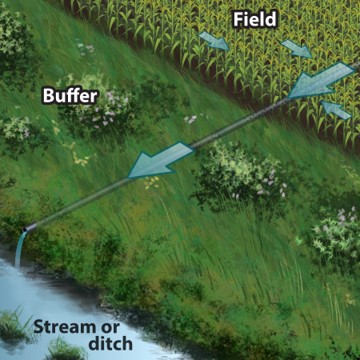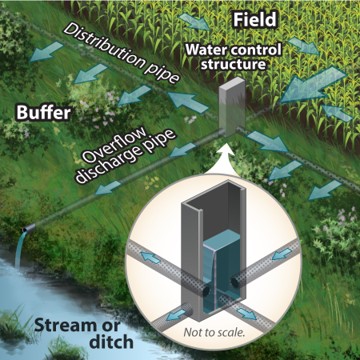Saturated Buffers
Saturated Buffers utilize the organic matter in the soil profile of a vegetated filter strip located between a field edge and a stream to remove nitrogen from tile transported water. To accomplish this a control structure is used to divert a portion of the tile flow into a distribution tile that runs parallel to a stream.


Location
Saturated buffers typically treat drainage systems operating from a single field and on 6 – 12 inch mains. To meet NRCS standards, the site must meet the following:
- At least 30 feet of perennial vegetation
- Stable stream banks
- At least 1.2% soil organic matter
- No sand lenses or gravel layers in along the length of the distribution line
Footprint
The control structure sits on the main near the field edge in the the filter strip. Typical distribution lines run 500 to 1,000 feet.
Performance
Saturated buffers remove an average of 45% of the nitrate load.
Economics
Installation costs range from $5,000 – $8,000 per site.
$1.22 Practice cost per pound of N removed
Financial Assistance
Saturated buffers are eligible for financial assistance through the NRCS EQIP Conservation Practice Standard 604 as well as through the FSA CLEAR initiative. Your state may also have state or private funding available. For more information, please refer to the ADMC Financial Assistance page.
